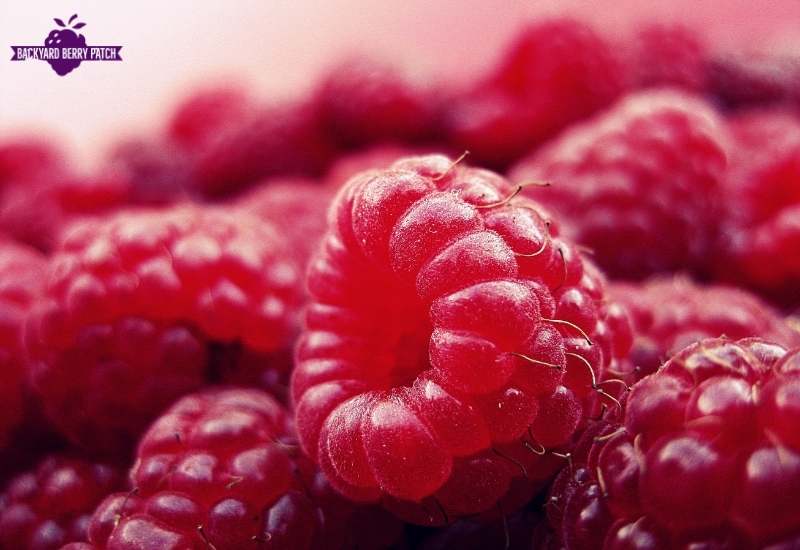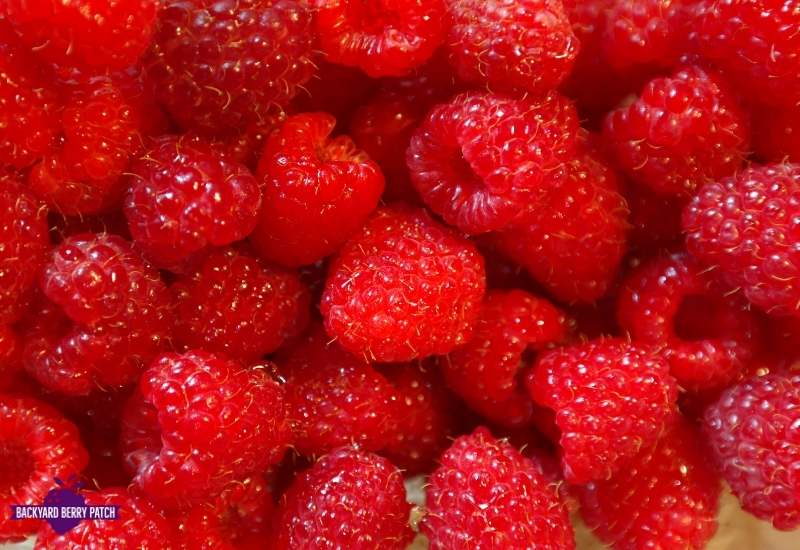Do you love the taste of fresh raspberries? You might want to try growing Heritage raspberries in your garden. These sweet and tart berries are easy to grow and produce fruit twice a year.
Heritage raspberries are a type of everbearing raspberry that yields crops in summer and fall. You can enjoy their delicious red berries from July through September. They’re perfect for eating fresh, baking into pies, or making jam.
Growing Heritage raspberries is simple. They do well in most climates and don’t need much care.
With some basic planting and pruning tips, you can have a bountiful harvest of these tasty berries right in your backyard.
Let’s explore how you can start your own Heritage raspberry patch.
Description Of The Heritage Raspberry
Heritage raspberry is a popular variety of everbearing raspberry that produces two crops each year. You’ll love its sweet, juicy fruits and easy-to-grow nature.
These raspberries grow on upright canes that reach 4-6 feet tall. The plants have green leaves and produce dainty white or pink flowers in spring.
You’ll enjoy a moderate crop of berries in early summer. Then get ready for a bigger harvest in the fall.

The fruits are large, firm, and extra-sweet. Their delicious flavor makes them perfect for eating fresh or using in jams.
Heritage raspberries are tough plants. They’re self-supporting, so you don’t need to provide a trellis. They’re also self-fertile, meaning a single plant can produce fruit.
You’ll appreciate how low-maintenance these raspberries are. They have good disease resistance and can grow in many climates.
Growing Conditions
Heritage raspberries thrive in specific conditions.
You’ll want to give them full sun for the best growth. These plants love 6-8 hours of direct sunlight daily.
Soil is key for your raspberries. They prefer well-draining soil that’s rich in organic matter.
Aim for a loamy texture with some sand mixed in. This helps prevent waterlogging.
The ideal pH for your Heritage raspberries is slightly acidic, between 5.5 and 6.5. You can test your soil and adjust if needed.
These berries are hardy in many climates. They can handle some frost but do best in areas with mild winters. The growing season typically lasts from spring to fall.
Here’s a quick guide to optimal conditions:
- Sunlight: Full sun to partial sun
- Soil: Well-drained, loamy, fertile
- pH: 5.5-6.5
- Water: Consistent moisture, not waterlogged
- Climate: Hardy in zones 4-8
Remember, your Heritage raspberries need space to spread out. Plant them with enough room to grow and you’ll be rewarded with a bountiful harvest.

Unique Planting And Care Instructions
Heritage raspberries are easy to grow, but they need some special care.
You’ll want to plant them in well-draining soil with a pH between 5.5 and 6.5.
Make sure to give your plants plenty of sun and space. Plant them in rows, leaving about 2 feet between each plant and 6 feet between rows.
Water your raspberries regularly, especially during dry spells. They like moist soil but don’t want to be waterlogged.
Fertilize your plants in early spring with a slow-release fertilizer.
You can also add compost to boost soil health.
Pruning is important for Heritage raspberries.
In late winter, cut all canes to ground level. This encourages new growth and better fruit production.
Watch out for pests like aphids and diseases such as powdery mildew. Remove any infected parts quickly to prevent spread.
Mulching helps keep the soil moist and suppresses weeds. Use organic mulch like straw around your plants.
If you’re short on space, try growing Heritage raspberries in containers. They do well in large pots with good drainage.
Remember to protect your berries from birds. You might need to use netting as they ripen.
Harvesting & Uses
It’s time to pick your Heritage raspberries! You’ll know they’re ready when they easily come off the plant with a gentle tug. The berries should be bright red and fully plump.
You can enjoy two harvests with Heritage raspberries. The first comes in early summer, and the second in fall. The fall crop is usually bigger and tastier.
Fresh raspberries are a real treat. Pop them straight into your mouth for a burst of sweet-tart flavor. They’re great in fruit salads or on top of yogurt too.
Don’t forget about preserving your harvest. Here are some tasty options:
- Make homemade jams and jellies
- Freeze berries for later use
- Use in baked goods like muffins or pies
- Add to smoothies for extra flavor
Heritage raspberries are perfect for canning. This lets you enjoy their delicious taste all year round. They also freeze well, keeping their shape and flavor when thawed.
Try using your raspberries in savory dishes too. They can add a nice twist to salad dressings or sauces for meat dishes.
Remember, fresh raspberries don’t last long. Use them within a few days of picking or preserve them quickly. With so many ways to enjoy your harvest, you’ll never run out of ideas!

Leave a Reply